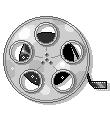Infinite Jest





 1996, David Foster Wallace
1996, David Foster Wallace
“The truth will set you free. But not until it is finished with you.”
I would recommend this book to:
- People who have struggled with any addiction (social media, T.V., drugs, etc.)
- Loners with time to kill (Wallace designed the book for such people)
- Americans — it has brilliant insights regarding cultural issues
- Those seeking something very challenging and new
- People who have struggled with mental health
- Academic burnouts
Wallace was a professor, Harvard dropout, and tennis player whose life was plagued by depression and addiction; this book formats his very personal views and experiences in a dystopia obsessed with mindless, endless self-indulgence. It intertwines around 100 characters in three broad narratives: life in a prestigious tennis academy, journeys in addiction recovery, and extremists trying to use an extremely addicting film, “Infinite Jest”, to psychologically debilitate people and overthrow the government.
His portrayal of addictions is written with incredible detail and self-awareness. He mainly describes drug and alcohol addicts, but any addict will find it very relatable because it’s so comprehensive and riveting. Just to list a few ideas his characters embody — addictions don’t always take obvious forms; they appear in people from all levels of society, and can concern work, adrenaline rushes, and so on. Despite appearing like your best friend at first, they gradually reveal themselves as monsters as they ruin your health, relationships, and dignity, until you have nothing left but the thing that destroyed you. For a time, they drown out the thoughts of the problems that haunt you, like trauma or spiritual emptiness; but ultimately, you can only grow as a person by acknowledging these problems and confronting them.

Self-indulgence is a major subject in general; he discusses its deep roots in American (and generally modern) culture, specifically in our values of individualism and freedom. Rather than being compelled to devote our lives to a unified cause (besides freedom itself), we’re told to live for ourselves and pursue our personal desires. But this is a heavy psychological responsibility — many people are too simple-minded to voluntarily commit their lives to healthier, more selfless goals because those require discipline and sacrifice day by day. Rather, they often devote themselves to comfort and entertainment, to making their lives as pleasurable as possible, no matter what the long-term effects may be. Of course, the issue is far more complicated than that, but many of Wallace’s visions about the future have began to come true -- modern readers will find parallels in the mindless, ubiquitous consumption of entertainment (TikTok and Instagram); moreover, in how this media may be covertly weaponized for political purposes (though in less extreme ways.)
Wallace was surprised that many people's main takeaway from the book was that it was really funny, as he intended to write something deeply depressing. While the book has lighthearted moments, its humor is often black humor, showing how trivial or humiliating addicts’ and modern people’s problems are. A morbidly obese lady is mortified when her rear end gets stuck in a bus’ bathroom window, and to cope with the embarrassment, she hires someone to bring her peach cobbler 24/7 until she dies. The details and presentation make it seem ridiculous, but when you think about it, it’s depressing, too, isn’t it? Or when the Statue of Liberty is leased to companies for advertising products, and a diaper company puts a huge diaper on it. I think this humor parallels how modern society uses entertainment to disguise the bleakness beneath it; however, if so many people missed this point, I don’t think its execution was very good.

He also said once that the book was designed for those like him -- those who had few friends and escaped loneliness through books. Thus, it focuses heavily on immersion — there are 1,100 pages and over 100 characters; it’s driven by subplots, themes, and comments around characters’ lives and growth. Wallace’s target audience may see Infinite Jest as a little world rich with history and people, but those who are more busy (like myself), it almost felt like a waste of time. The majority of the book’s contents just existed for the sake of existing, to be read for no distinct purpose or reward.
Moreover, it’s written in a style intentionally difficult to read so it occupies your entire attention, with winding sentences and plentiful digressions into anatomy, math, and cinematography. Different subplots are introduced with little connection to one another until you reach around 200 pages. Perhaps because it’s meant to parallel the confusion of postmodern life; perhaps it’s meant to make you stop mindlessly consuming media. Maybe it’s meant to mirror how overwhelming it is to live in the “Age of Information.” While that’s all cool in concept, it made reading slow as molasses -- in most books, I read around fifty pages an hour, but only ten while reading this.
For someone in 1996, the way he portrayed women and minorities wasn’t horrible, but kind of irritating. Some of it is due to prejudiced characters being narrators, but it was also due to his own narrow worldviews. The Ebonics used by Black characters was painful to read as it didn’t read like Ebonics at all, just confusing English. (Like “Wardine be cry”) The female characters are unfailingly the subject of romantic or sexual focus at some point, even when unnecessary: in a chapter about a suicidal girl, between descriptions of her psychological torment, Wallace kept commenting on her chest size, which seemed facetious.
Although I’d be hesitant to recommend it to others, overall I’d say it was pretty good. Whenever I find myself thinking about the great problems of modern times, I start flipping to a page in this book; it’s been formulative to my life philosophy, even if it was difficult to read day-by-day.
Back
Guide + resources
Written July 7, 2025.